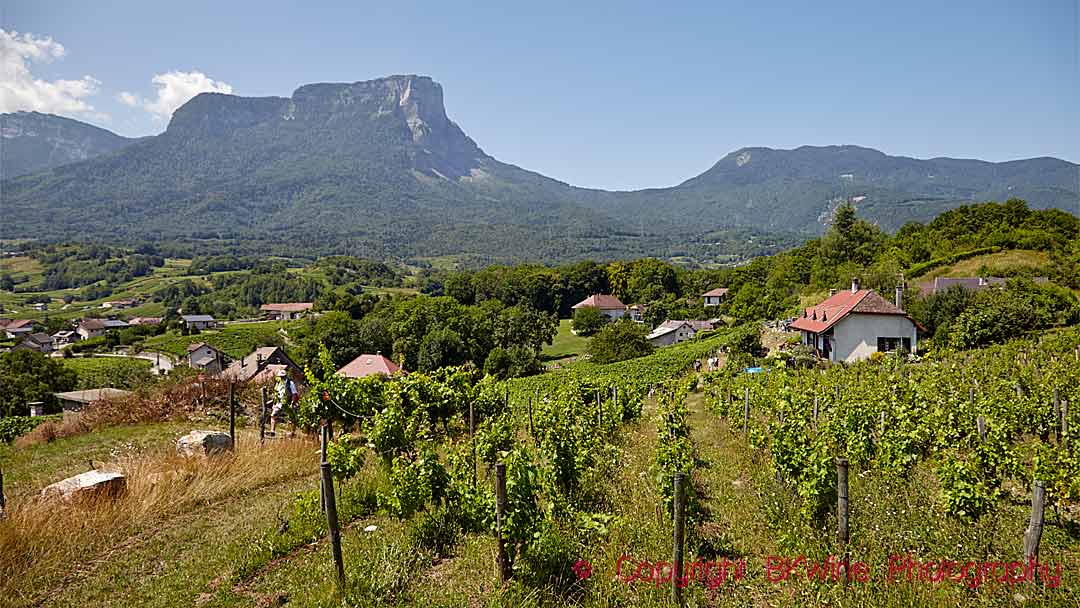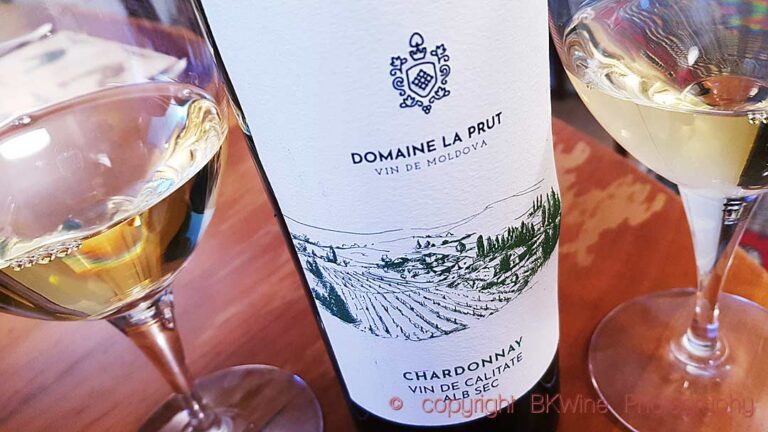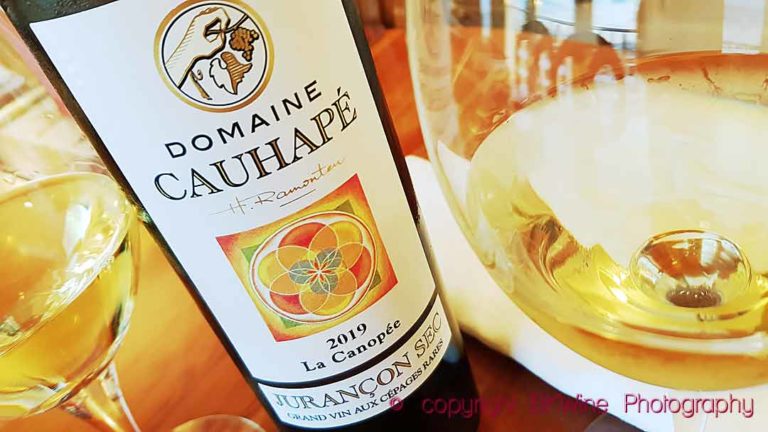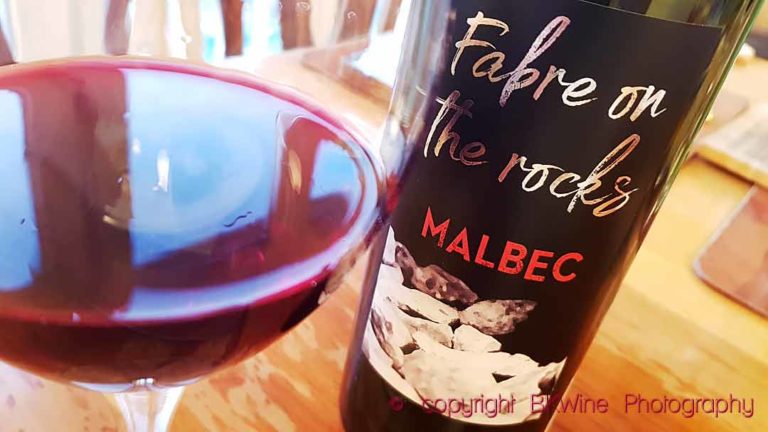BKWine Tastes: The first wine is a concentrated and unusual Pouilly-Fumé from Château de Tracy. This is followed by a Corbières from large producer Château de Lastours and three wines from the small appellation of Seyssel in Savoie.
“BKWine Tastes” is a collection of wines we have tasted recently. It is often samples that producers have sent us to show us what they do or other bottles that we have come across at tastings or on our tasting table in the office.
HD Haute Densité du Château de Tracy 2019, Pouilly-Fumé
Chateau de Tracy made its first vintage of Haute Densité in 2004. The name means high planting density, and this is absolutely the case. The wine comes from a vineyard with Kimmeridge soil that has been planted with 17,000 vines per hectare. A typical vineyard with a very high planting density is 10,000 vines per hectare (and this is already quite unusual). In Pouilly-Fumé, they usually have 7000.
The chateau’s reason for planting at this density is that it increases the competition between the vines and thus gives the wine more concentration as each plant carries fewer bunches. On average, for Haute Densité, they only have three grape bunches per plant, which roughly means one glass per plant, instead of one bottle, which is often considered normal. In addition, the risk of rot decreases because the clusters are more scattered.
We visited Tracy not long after they had released the first vintage, and I remember how happy the winemaker at the time was that the wine was a success, as many colleagues and neighbours didn’t take the project seriously.
Haute Densité 2019 is powerful with very high and fresh acidity. There are citrus, green apples and a massive concentration of flavours. The wine combines the aromatic character of sauvignon blanc with a fullness that is not so common for the grape. The wine ferments and ages in 500-litre barrels for ten months with regular stirring of the lees.
However, they should abandon the unnecessarily heavy bottle of 1032 grams. It does not feel right in this age of sustainability. (~ 45 euros).
Château de Lastours 2017, AOP Corbières, Languedoc, 15 euros
This Languedoc wine is pleasant with a warm and southern character. The grapes are the typical ones for the region, syrah, grenache and carignan. Syrah contributes with spices and violets, and there is also lots of dark fruit. Good acidity and length make the wine balanced. Maybe it finishes a bit soft. After fermentation and skin contact for three weeks, the wine rests for 12 months in one and two-year-old 225- and 500-litre oak barrels.
Château de Lastours is a large estate with 850 hectares of land, of which 100 hectares are planted with vines and 10 hectares with olive trees. The chateau is located south of Narbonne and 10 kilometres from the Mediterranean Sea. The wines have been organically certified since 2020. The property also has a restaurant, and you can stay overnight at the property, in a villa in the middle of a charming southern France landscape of pine trees, olive groves and vineyards.
Seyssel AOP turns 80, one of France’s oldest and smallest appellations
Seyssel is a small region in Savoie, which this year turns 80 years old as an appellation. It was in 1942 that Seyssel got its appellation d’origine contrôlee, as it was then called, as one of the first wine regions in France. Seyssel is one of the oldest appellations in France and the oldest in Savoie. With its 90 hectares, it is also one of the smallest in France.
Seyssel is found 30 km north of Lac de Bourget. The vineyards are on both sides of the river Rhône, at an altitude of between 200 and 400 meters. The producers mainly grow the grape altesse (also called roussette) but also a local white grape, a speciality of Seyssel, called molette, which is planted on 18 hectares. They make both still and sparkling wines from these two grapes.
We have tasted a few wines from Seyssel:
Seyssel AOP 2020, Maison Gallice, Demi-sec
It is pretty unusual to come across a semi-dry wine, and that alone makes it interesting. Maison Gallice has 15 hectares of vineyards, and they grow the two grapes of Seyssel, altesse and molette. This wine ferments in stainless steel tanks to retain the fruit. We find ripe peaches and melons in the aromas. The finish is quite soft and round, and the acidity is relatively low. It is unpretentious and easy-drinking but would have benefited, I think, from having a lower sugar content. (6.10 euros)
Nuance d’Altesse 2020, Domaine Gérard Lambert, Seyssel
Gérard Lambert is the fifth generation of wine growers. This wine comes from a small plot of 0.6 hectares. The wine ferments and ages for ten months in amphorae of sandstone. The wine is full-bodied and fresh with floral and citrus notes and also some hazelnuts. A delicious micro-cuvée with personality. (13.95 euros)
Seyssel Mousseux 2018 Traditional Method, Domaine du Clos d’Arvières
It was the sparkling wines that made Seyssel known outside its region. But production is small. AOP Seyssel Mousseux produces only 1500 hectolitres per year. The method is the traditional one, and the wines are aged for at least nine months (but often longer) before being disgorged.
The Domaine du Clos d’Arvières has 11 hectares of vineyards and is run by Martin and Bernard Mollex. They make this sparkling wine from 60% molette and 40% altesse, grown in clay/limestone soil. The fermentation is slow at a low temperature. The wine is aged for six months in the tank before bottling and then in the cellar for 36 months. The wine has character, and it is a pleasant, very affordable dry sparkling with peaches, citrus and dried fruit. (6.60 euros)
















